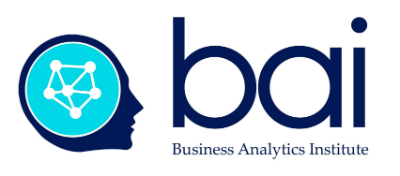Design Thinking is all about making better decisions
What is the link between design thinking and innovation? A quick search today for “Design Thinking degrees” on Google turned up 4,420,000 results. Universities and corporate education propose an impressive array of variants of Ideo’s original vision ofempathizing, defining, ideating, prototyping, and testing. In spite of the staggering numbers of programs pitching “design thinking”, there is little proof of a direct relationship between design and innovation.[i] John Kennedy asserts that mainstream visions of design thinking are often shallow and misdirected.[ii] Let’s suggest that most are missing a critical point: design thinking requires a different approach to how we view the problems we are trying to solve, how we are using the data, and how we look for solutions.
Design is fundamentally about how to make sense of things — or as Aaash Goel suggests, “turning the abstract into something concrete.”[iii] Trying to define what exactly is meant by “things” invites careful consideration of the nature of the problems (service innovation?, customer engagement?, organizational sustainability?) we are trying to solve. In our framework of the 4P’s, we suggest that the problems can be analyzed by situating them in places (the vision, the events, the actors and the outcomes of a company, supply chain or market), platforms (the technologies used to bring together producers and consumers of products, services or experiences), people (the mindsets of how we frame both our business challenges and solutions) and practices(the culture, norms and procedures of production).[iv]
IBMs Lara Hanlon argues design has evolved over the last decade from altering the appearance of things to that of modeling the experience of things. [v] We explore places, platforms, people and priactices today using the data at our disposal. In our framework of the Ladder of Initiatives[vi], we propose that these experiences are modeled visions of the relationships between organizational strategies and their use of data. In top-down decision making, visionaries often impose a strategy that conditions the tactics, contexts, and collection of data. In bottom-up decision making data can help leadership understand the contexts, tactics and strategies that can guide strategy in any given market.
The value of design thinking is neither in its artistic appeal nor its unorthodoxy, but in thinking differently about how to solve business or organizational challenges. If deduction is at the core of scientific management — reasoning used to “strictly prove” the laws of business, induction is at the heart of the art of management: viewing the premises of our observations as evidence of the eternal truths of markets and of industry. Design thinking relies on neither deduction nor induction, but on abductive reasoning that involves placing probabilistic bets on better products, services, and ideas in complex environments. In sum, design thinking is all about sense-making: exploring the nature of the problems, identifying pertinent data, and learning to take impactful decisions.
(Re-)designing the way we think about value is at the heart of the Business Analytics Institute. In our Summer School in Bayonne, as well as in our Master Classes in Europe, we put analytics to work for you and for your organization. The Institute focused on five applications of of data science for managers: working in the digital age, data-driven decision making, machine learning, community management, and visual communications. Data-driven decision making can make difference in your future work and career.
Lee Schlenker is a Professor at ESC Pau, and a Principal in the Business Analytics Institute http://baieurope.com. His LinkedIn profile can be viewed atwww.linkedin.com/in/leeschlenker. You can follow us on Twitter athttps://twitter.com/DSign4Analytics
_______________
[i] Kolko, J. (2007), “The Tenuous Relationship Between Design and Innovation”. In Routledge’s Artifact, Volume 1, Issue 3, 2007
[ii] Kennedy, J., (2016), Design Thinking must not become a management fad, Fjordnet
[iii] Goel, A., (2016), What kind of designer do you want to be ?
[iv] Schlenker, L. (2016), DSIgn4Change — 4Ps for improving Management Education, in J. M. Spector, et al., Competencies, Challenges and Changes in Teaching, Learning and Educational Leadership in the Digital Age, Springer.
[v] Kennedy, J., (2016), A design for life revolution is sweeping IBM, Silicon Republic
[vi] Schlenker, L. (2017) Is leadership just an illusion in an economy in which everyone prefers posting to listening?,




